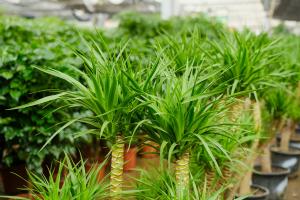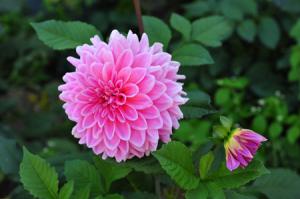Introduction
When it comes to aquarium decoration, plastic plants are a common choice. They come in a variety of colors, shapes, and sizes to beautify your fish tank. One question that often arises is whether plastic plant pots are safe for aquarium use. In this article, we will delve into this topic, discussing the different types of plastic, their safety, and associated risks.
Plastic Types
There are several types of plastic used in fish tanks, each with different properties, safety risks, and benefits. The most common plastics used in aquariums include polyethylene, polypropylene, and polycarbonate. Polyethylene and Polypropylene are considered safe for aquarium use because they are non-toxic and do not leach harmful chemicals into the water. However, polycarbonate plastic is not recommended for fish tanks as it contains bisphenol A (BPA), which can cause harm to fish and other aquatic organisms.
Safety Risks
While plastic plant pots can be safe for aquarium use, there are risks to be aware of. For example, if the plastic pot is made from cheap or poor quality materials, it may release toxic chemicals into the water that can harm fish and other aquatic creatures. Additionally, some plastic pots are painted with toxic substances that can leach into the water, leading to long-term damage to the ecosystem. Therefore, before using any plastic plant pot in your aquarium, ensure it is of good quality and doesn't contain any toxic substances.
Benefits of Plastic Plant Pots
Despite the various risks associated with plastic plant pots, they have many advantages. First, they are an inexpensive option for decorating your aquarium. Second, they are lightweight, making it easy to arrange and rearrange them as necessary. Third, plastic pots are low maintenance and will not rot like other types, such as wood or ceramic. Fourth, they are available in many colors and shapes, allowing you to customize your aquarium to your preference.
Cleaning Plastic Plant Pots
Like any aquarium decoration, plastic plant pots require regular maintenance to keep them clean and safe for the fish. You can clean the plastic pots by removing them from the aquarium and scrubbing them with a soft brush and mild soap. Rinse them thoroughly with clean water and leave them to air dry before placing them back into the tank. Avoid using harsh detergents or scrubbing too hard, as this can damage the plastic surface and cause it to leach chemicals into the water.
Conclusion
When used with care and caution, plastic plant pots can be safe and useful aquarium decorations. However, it is essential to know the type of plastic used, their safety risks and benefits, and the proper way to care and maintain them to ensure water quality and fish health. Finally, always remember to choose high-quality plastic planters and avoid cheap or poorly made ones that may contain toxic substances.

 how many times do yo...
how many times do yo... how many planted tre...
how many planted tre... how many pine trees ...
how many pine trees ... how many pecan trees...
how many pecan trees... how many plants comp...
how many plants comp... how many plants can ...
how many plants can ... how many plants and ...
how many plants and ... how many pepper plan...
how many pepper plan...
































